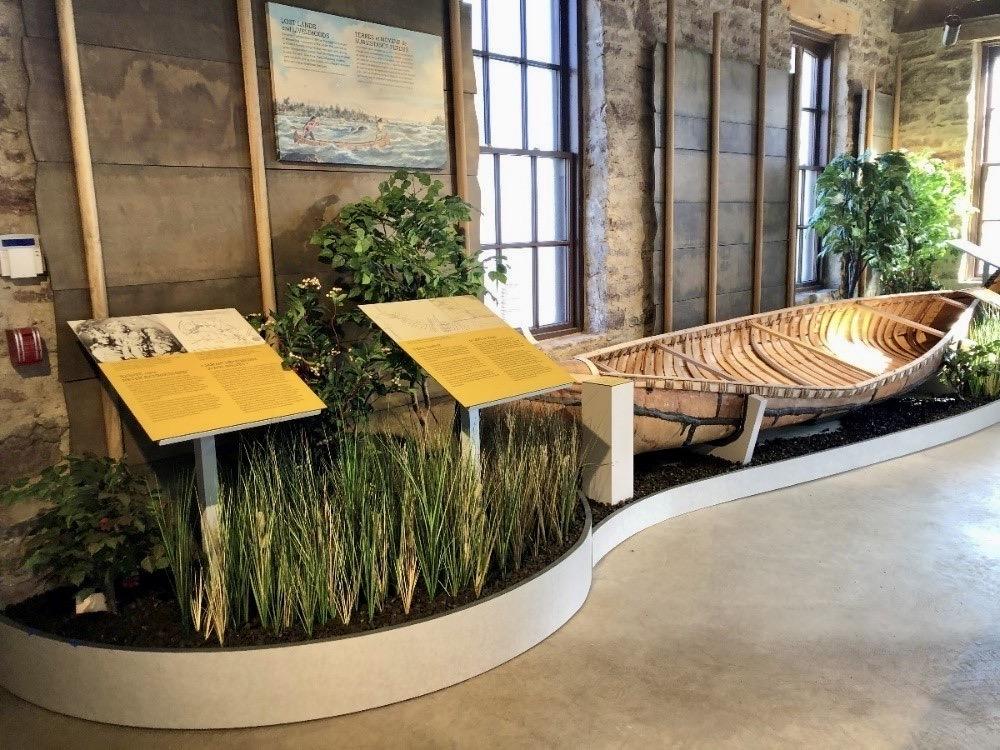
The new visitor center at Sault Ste. Marie National Historic Site opened June 6/Parks Canada
The Sault Ste. Marie Canal National Historic Site has a new, accessible visitor center and interpretive exhibit.
The 720-square-foot center features two exhibits, while the 770-square-foot, self-guided exhibit space has four exhibits and an admission fee.
The $4-million ($3.1-million USD) project — funded through the Federal Infrastructure Investment Program — is inside the restored Blacksmith’s Shop and Stores Building.
Opened June 6, the space features interpretive elements that outline the impact that the construction of the canal had on First Nation and Métis Nation communities. There are interactive exhibits, interpretive panels, historic photographs, artifacts and a birch bark canoe on loan from Batchewana First Nation.
An interactive touch screen map details points of interest, trails and historic structures on the site, while an interactive lock model showcases the canal’s technical innovations.
Parks Canada worked with the Batchewana First Nation, Métis Nation of Ontario and other local groups to ensure the exhibit materials reflect the diverse histories and experiences of the people of Sault Ste. Marie and Northern Ontario. Archival photography work was supported by the Sault Ste. Marie Library and the Sault Ste. Marie Museum, with the museum assisting with exhibit installation.
The collaboration with Batchewana First Nation and Métis Nation of Ontario “is part of our government’s ongoing efforts towards reconciliation,” Terry Sheehan, Parliamentary Secretary to the Minister of Labour and Member of Parliament for Sault Ste. Marie, said in a news release. “This interactive, signature exhibit will foster a better understanding of Indigenous peoples’ perspectives, cultures and traditions, ensuring a meaningful visitor experience for years to come.”
Designated a national historic site in 1987, the canal draws about 100,000 land-based and 55,000 water-based visitors each year.
The canal was the longest and first electrically operated lock in the world when it opened in 1895. It was the last link in a 3,500 kilometre (2,200-mile), all-Canadian waterway stretching from the Atlantic Ocean to the western tip of Lake Superior.
The federal government is injecting more than $14 million ($11 million USD) into the site as part of the largest federal infrastructure plan in the history of Parks Canada. The historic core — a cluster of heritage buildings made up of the Carpentry Shop, Stores Building, Blacksmith’s Shop, Powerhouse and surrounding landscape — is being revitalized.

 Support Essential Coverage of Essential Places
Support Essential Coverage of Essential Places



